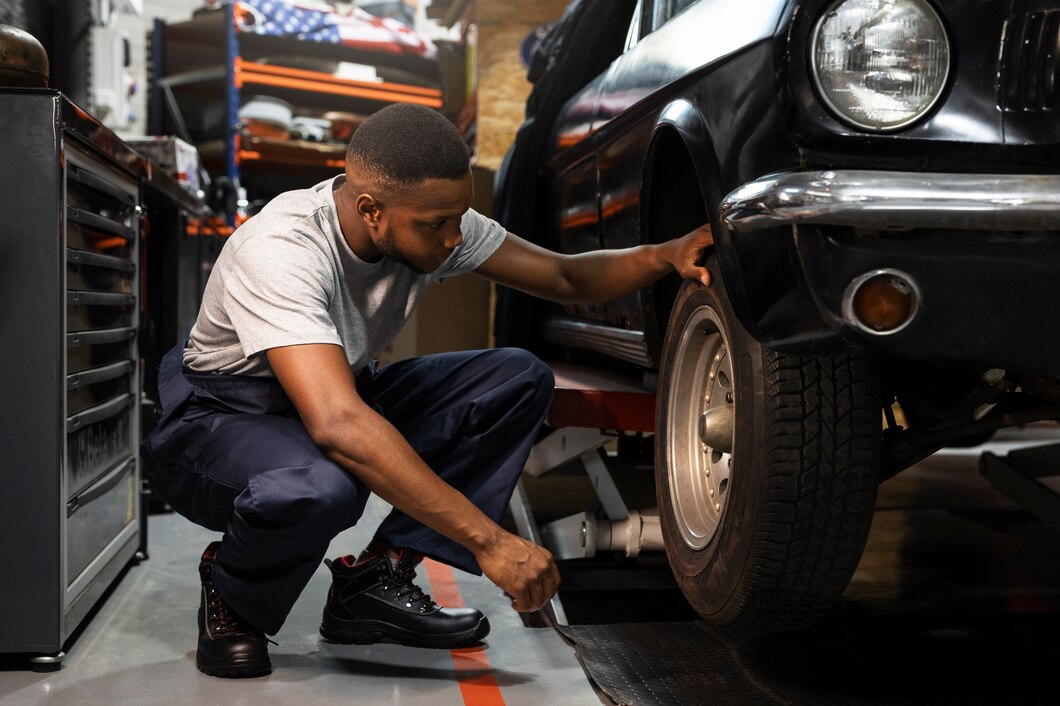Constant Velocity (CV) joints are crucial components of your vehicle’s drivetrain, enabling the drive shafts to transmit power smoothly to the wheels while accommodating the up-and-down motion of the suspension. When CV joints start to fail, they can cause a range of problems that can affect your car’s performance and safety. Recognizing the early signs of CV joint issues can help you address the problem before it leads to more severe damage or a potential breakdown. Here are some early signs that your car might have a CV joint problem.
1. Clicking or Popping Noises
One of the most common and noticeable symptoms of a failing CV joint is a clicking or popping noise when turning. This noise typically occurs when the CV joint is worn out and cannot handle the angle changes in the drive shaft effectively. You are likely to hear it when making sharp turns, especially when accelerating. If you hear this sound, it’s essential to have your vehicle inspected as soon as possible.
2. Grease on the Inside or Edge of Tires
CV joints are protected by rubber boots filled with grease to keep them lubricated. If these boots crack or tear, grease can leak out. This grease often ends up on the inside of the wheel or along the edge of the tire. Inspect your tires for any signs of grease, as this can indicate a damaged CV boot that needs to be repaired or replaced to prevent further joint damage.
3. Vibration While Driving
A damaged or failing CV joint can cause your vehicle to vibrate excessively while driving. These vibrations often become more pronounced when accelerating or driving at higher speeds. While vibrations can result from various issues, a CV joint problem should not be ruled out, especially if accompanied by other symptoms on this list.
4. Bouncy Ride
If your ride feels unusually bouncy, particularly when driving over bumps or rough terrain, it could be due to a failing CV joint. This bounciness occurs because the joint can no longer absorb and distribute the force as effectively, leading to a rougher ride.
5. Knocking Sound
A knocking sound coming from under the vehicle can also indicate a CV joint issue. This sound is often rhythmic and can become louder as the problem worsens. The knocking noise usually results from the joint’s inability to maintain its structural integrity while rotating.
6. Difficulty in Steering
Problems with the CV joint can affect your vehicle’s steering. You might notice that it becomes harder to steer, or the steering feels less responsive. This issue occurs because the CV joint is essential for transmitting power to the wheels while allowing for the motion of the suspension. If the joint is compromised, steering can be adversely affected.
7. Torn CV Boot
A visual inspection of the CV boots can reveal signs of damage. If you see that a CV boot is torn or cracked, it’s likely that dirt and moisture have entered the joint, accelerating wear and tear. A torn CV boot is a precursor to more severe CV joint issues and should be addressed promptly.
8. Unusual Tire Wear
Uneven or unusual tire wear can also signal a problem with the CV joint. When the joint is not functioning correctly, it can cause the wheels to move improperly, leading to uneven tire wear. Regularly check your tires for any abnormal wear patterns, as this can help you identify underlying issues with the drivetrain.
9. Loss of Power to the Wheels
In severe cases, a completely failed CV joint can result in a loss of power to the wheels. If the joint breaks, the axle cannot transfer power from the transmission to the wheels, rendering the vehicle undrivable. If you experience a sudden loss of power, it’s crucial to seek immediate assistance.
Detecting CV joint problems early can save you from more expensive repairs and potential safety hazards down the road. Regular maintenance and inspections are key to keeping your vehicle in good condition. If you notice any of the signs mentioned above, it’s advisable to have your car checked by a professional mechanic as soon as possible. Addressing CV joint issues promptly will help ensure your vehicle remains safe and reliable on the road.











